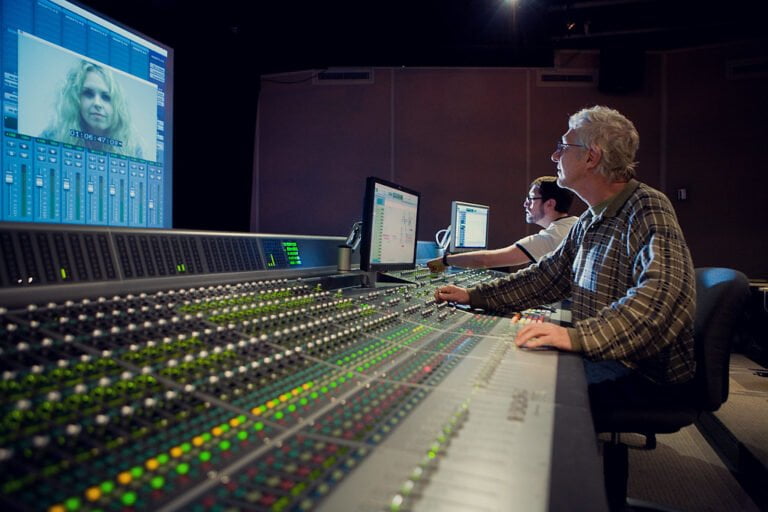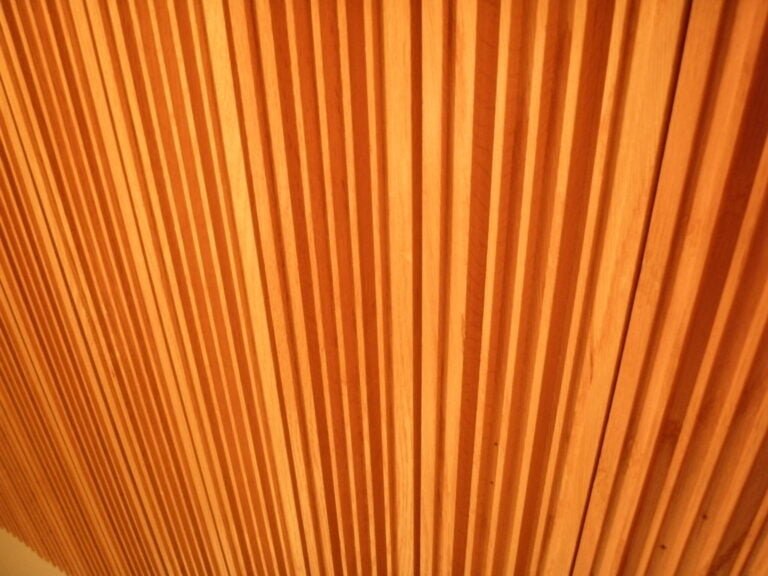Creating the Perfect Acoustic Environment for Your Home Studio
Hey there! Are you itching to take your home studio to the next level? Well, get ready to dive into the secrets of creating the perfect acoustic environment for your creative space. We're here to guide you through the process and help you unlock your true creative potential.
We are supported by our audience. When you purchase through links on our site, we may earn an affiliate commission, at no extra cost for you. Learn more.
First things first, let's talk about the importance of acoustics. Ever wondered why some recordings sound amazing while others fall flat? It all comes down to the way sound waves bounce around your studio. By understanding acoustics, you'll be able to control those reflections and echoes, and ultimately, shape your sound.
Now, let's assess your studio space. Is it a small bedroom, a garage, or a dedicated room? Whatever the case may be, we'll help you make the most of what you've got. No need to stress about a less-than-ideal space – we'll find ways to work with it!
Managing reflections and echoes can be a tricky business, but fear not! We'll show you some clever techniques to tame those unruly sound waves. Say goodbye to unwanted resonances and hello to a more balanced and professional sound.
Choosing the right acoustic treatment materials is like picking the perfect ingredients for a delicious meal. We'll take you through the options and help you make informed decisions. Think of it as creating a recipe for sonic success!
Next up, let's talk about speaker and listening area positioning. Just like a good dance partner, your speakers need to be in the right spot to groove with your ears. We'll show you how to find that sweet spot where the magic happens.
Finally, we'll help you fine-tune your acoustic environment. It's like adding the final touches to a masterpiece. With a few adjustments here and there, you'll be amazed at the difference it can make in your recordings.
So, are you ready to revolutionize your sound? By following our step-by-step guide, you'll be well on your way to creating the perfect acoustic environment for your home studio. Get ready to unleash your creativity and make your music shine!
Understanding the Importance of Acoustics
Why is it crucial for you to understand the importance of acoustics in your home studio? Well, the answer is simple: acoustics can make or break the quality of your recordings. Imagine spending countless hours composing and producing a track, only to have it sound muffled or distorted due to poor acoustic conditions. Understanding the importance of acoustics is the first step towards creating a professional and innovative home studio. Acoustics refers to the way sound behaves in a physical space, and by optimizing your studio's acoustics, you can achieve a balanced and accurate representation of your music. This means that every detail and nuance in your recordings will be faithfully captured, allowing you to create music that truly stands out. So, don't underestimate the role of acoustics in your home studio – it's the foundation for achieving sonic excellence.
Assessing and Analyzing Your Home Studio Space
Assess the dimensions and layout of your home studio space to determine its suitability for creating an optimal acoustic environment. Begin by measuring the length, width, and height of the room. These dimensions will help you calculate the volume of the space, an important factor in achieving balanced sound. Next, examine the layout of the room and identify any potential obstacles or reflective surfaces that could affect sound quality. Consider the placement of windows, doors, and furniture, as well as the materials used for walls, ceiling, and flooring. Additionally, assess the overall shape of the room, as irregularly shaped spaces can introduce acoustic challenges. By carefully analyzing your home studio space, you can make informed decisions on how to optimize its acoustics and create an environment that fosters innovation and creativity.
Managing Reflections and Echoes
To effectively manage reflections and echoes in your home studio, consider using acoustic treatments to optimize sound quality. Reflections and echoes can negatively impact the clarity and accuracy of your recordings, making it essential to address them in your acoustic environment. One effective solution is the use of acoustic panels, which help absorb and diffuse sound waves, reducing unwanted reflections. Placing these panels strategically on the walls, ceiling, and floor can help create a more balanced and controlled sound. Additionally, bass traps can be used to address low-frequency reflections and standing waves in your studio. By managing reflections and echoes through the use of acoustic treatments, you can create a more professional and accurate listening environment, ensuring that your recordings sound their best.
Selecting the Right Acoustic Treatment Materials
When selecting the right acoustic treatment materials for your home studio, consider the specific needs of your space and the desired sound quality you want to achieve. The materials you choose will play a crucial role in controlling the reflections, echoes, and overall sound balance in your studio. One of the most commonly used materials for acoustic treatment is acoustic foam panels. These panels are designed to absorb sound waves and reduce reflections, resulting in a more controlled and accurate sound. Another option is fiberglass panels, which are highly effective at absorbing mid to high-frequency sounds. For low-frequency control, bass traps made of mineral wool or fiberglass are commonly used. Additionally, diffuser panels can be used to scatter sound waves and create a more natural and balanced sound. By carefully selecting the right acoustic treatment materials, you can ensure that your home studio provides the optimal acoustic environment for your creative endeavors.
Positioning Your Speakers and Listening Area
To achieve optimal sound balance in your home studio, position your speakers and listening area with careful consideration. The placement of your speakers and the arrangement of your listening area can significantly impact the quality of sound reproduction in your studio. Start by placing your speakers at an equal distance from the listening position and forming an equilateral triangle. This positioning helps in achieving accurate stereo imaging and soundstage. Additionally, ensure that your speakers are not placed too close to walls or corners, as this can cause unwanted bass buildup and affect the overall clarity of the sound. Experiment with speaker toe-in angles to find the sweet spot for the best sound dispersion. By investing time and effort into positioning your speakers and listening area correctly, you can create an acoustic environment that enhances your creativity and allows for a truly immersive music production experience.
Fine-tuning Your Acoustic Environment
To fine-tune your acoustic environment in your home studio, make adjustments to the room's layout and add acoustic treatment materials. Start by repositioning your speakers and listening area to achieve the best sound dispersion and imaging. Experiment with different angles and distances to find the optimal setup. Additionally, consider adding bass traps to control low-frequency reflections and diffusers to scatter sound waves, reducing flutter echoes. Absorption panels can be strategically placed to minimize reflections and improve clarity. Remember to address any potential trouble spots, such as corners or parallel surfaces, with additional treatment. Don't forget to measure and analyze the room's frequency response using tools like room correction software or measurement microphones. A well-balanced acoustic environment will enhance your listening experience and allow for accurate sound reproduction in your home studio.
Conclusion
In conclusion, creating the perfect acoustic environment for your home studio is crucial for achieving optimal sound quality. By understanding the importance of acoustics, assessing and analyzing your space, managing reflections and echoes, selecting the right acoustic treatment materials, and positioning your speakers and listening area correctly, you can fine-tune your acoustic environment to enhance your recording and mixing experience. With these steps, you can ensure that your home studio provides the ideal setting for producing professional-quality audio.







